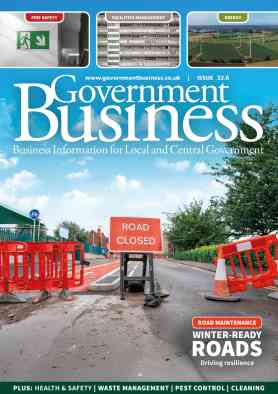Biomass – carbon sink or carbon sinner?
 Biomass – carbon sink or carbon sinner?, a report published by the Environment Agency finds that using energy crops or waste materials as fuel for generating electricity and heat could play an important role in meeting the UK’s renewable energy and greenhouse gas emission reduction targets, but only if good practice is followed.
Biomass – carbon sink or carbon sinner?, a report published by the Environment Agency finds that using energy crops or waste materials as fuel for generating electricity and heat could play an important role in meeting the UK’s renewable energy and greenhouse gas emission reduction targets, but only if good practice is followed.
Using biomass to generate electricity and heat can deliver very large greenhouse gas emission savings compared with using gas or coal but only if the fuel is produced in an environmentally sustainable way and used efficiently. Best practice can deliver up to 98 per cent less emissions than using coal but worst practice can result in more greenhouse gas emissions overall than using gas. The report estimates that greenhouse gas emissions of over three million tonnes of carbon dioxide per year could be saved by 2020 if good practice is followed.
Government incentives
To deliver these emissions reductions, the Environment Agency is urging government to ensure all generators publicly report the greenhouse gas emissions from producing, transporting and using biomass fuels and be ready to set minimum standards if required. It is also urging the government to provide greater incentives for combined heat and power than for electricity only plant, through the proposed renewable heat incentive.
Overall the best performing biomass schemes in terms of greenhouse gas emissions are those that deliver combined heat and power rather than just electricity, which is the current trend. They use wastes or energy crops that have not been transported too far. The worst performing schemes are those where energy crops are grown on what was previously grassland using a lot of nitrogen fertilisers. They expend energy in processing the biomass, for example into fuel pellets, and the fuel is transported thousands of miles and burned to generate electricity only.
Biomass heat and power is currently the largest source of renewable energy in the UK accounting for 2.3 per cent of the UK’s electricity generation and 1 per cent of our heat needs. It can be a low carbon renewable energy source because it is either based on wastes which would otherwise go to landfill or on energy crops and forestry that, after being harvested, continue to grow and absorb the carbon emitted when they are burned. The government’s renewable energy strategy envisages huge growth in energy generation from biomass so that by 2020 it provides about 30 per cent of renewable electricity and heat towards the UK’s overall target of 15 per cent renewable energy.
Playing the part
Tony Grayling, head of Climate Change and Sustainable Development at the Environment Agency, said: “The biomass heat and power sector can play an important role in helping the UK meet its renewable energy and greenhouse gas commitments but only if it meets high standards. We want to ensure that the sector’s growth is environmentally sustainable and that the mistakes made with biofuels are avoided, where unsustainable growth has had to be curbed. Biomass operators have a responsibility to ensure that biomass comes from sustainable sources, and is used efficiently to deliver the greatest greenhouse gas savings and the most renewable energy.
“The government should ensure that good practice is rewarded and that biomass production and use that does more harm than good to the environment does not benefit from public support.”
Other key findings of the report include:
- How a fuel is produced and the distance it is transported has a major impact on emissions – transporting fuels over long distances and excessive use of nitrogen fertilisers, can reduce the emissions savings made by the same fuel by between 15 and 50 per cent compared to best practice.
- Land use change can negate any emission savings – for example by using permanent grasslands to grow bioenergy crops.
- Emission reductions of over three million tonnes of greenhouse gases per year could be achieved by following good practice
- Co-firing biomass alongside fossil fuel is a good short term measure to reduce emissions, but unless carbon capture and storage can be deployed and preferably the heat utilised, it does not have a long term role.
A copy of the Environment Agency’s report, Biomass: Carbon Sink or Carbon Sinner, is available to download at www.environment-agency.gov.uk
Research for the report was carried out for the Environment Agency by AEA Technology.
In order to help biomass facility operators report on the lifecycle greenhouse gas emissions from fuel production and use, the Environment Agency has developed a Biomass Environmental Assessment Tool – BEAT2. This tool is already being used by biomass project developers to calculate and minimise their greenhouse gas emissions. The Biomass Environmental Assessment Tool, BEAT2, is available to download free from the Biomass Energy Centre website at www.biomassenergycentre.org.uk


